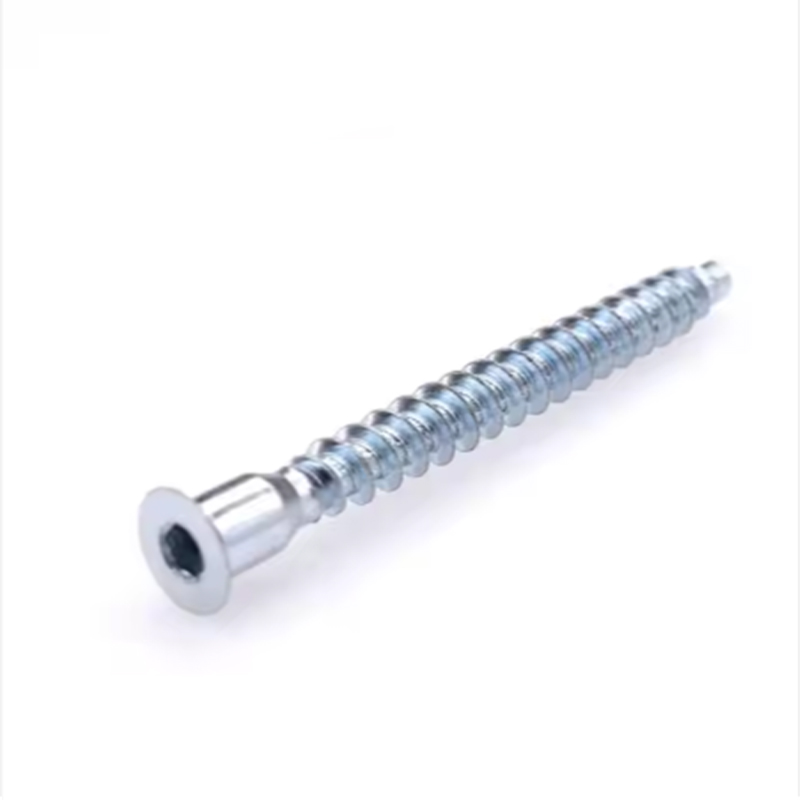

2025-10-18
In the realm of industrial fasteners, Antrenè boulon have been making waves. This isn’t about reinventing the wheel; it’s about refining the design and application of something seemingly simple, yet indispensable in construction and heavy-duty frameworks. Many tend to overlook coach bolts when talking about innovations, perhaps due to their established presence. But what’s happening now is that these bolts are not just holding things together—they’re redefining efficiency and reliability in various sectors.
First off, let’s tackle the design aspect. Traditionally, coach bolts have a domed head with a square neck, but recent innovations have focused on enhancing the materials and finishes. For example, at Hebei Muyi Import&Export Trading Co.,Ltd, accessible through sit entènèt yo, we see a shift towards using high-tensile materials. These materials not only improve strength but also compatibility with other modern construction materials.
The use of corrosion-resistant coatings is another major advancement. In industrial settings, where exposure to moisture and chemicals is common, having a bolt that maintains integrity over time is essential. Innovations in coatings are providing longer lifespan and reducing maintenance costs.
We’ve also noticed tweaks in thread designs, aiming to produce faster and more secure installations. Companies like Hebei Muyi are spearheading these designs, which make a significant difference during high-volume operations.
Coach bolts, once limited to carpentry and basic construction, are now finding their way into more specialized applications. Their application in sustainable building practices is particularly interesting. With the rise of eco-friendly constructions, the demand for reusable and easy-to-install fasteners has led to increased use of coach bolts.
I’ve seen them replace traditional fastener systems in modular homes, where speed and precision are critical. The ease with which they can be adapted to different structural needs is a testament to their growing versatility.
Industrial machinery assembly has also embraced these innovations. The secure fix provided by coach bolts allows for robust performance, which is crucial when dealing with heavy-duty equipment subject to constant stress.

Despite these advances, there are challenges too. Not every innovation leads to straightforward adoption. There’s often resistance from industries accustomed to traditional methods. The initial cost outlay for advanced materials or designs can deter some companies from making the shift.
Then there’s the training aspect. Implementing new types of fasteners requires retraining workers and modifying existing equipment, which are no small feats. Still, from my experience, once companies see the long-term savings and efficiency gains, the hesitation gradually diminishes.
I remember a project where we transitioned to new coach bolts mid-way. Initial skepticism turned into appreciation once the crew realized the time savings during installation.

The future? It’s shaping up to be one where adaptability is key. As the construction landscape evolves, so does the demand for more advanced fastening solutions. We might soon see coach bolts that integrate sensors for structural health monitoring, offering real-time data about the forces they endure.
There’s also potential for customization at a larger scale. With 3D printing and advanced manufacturing, bespoke solutions could become commonplace, tailoring coach bolts to specific projects under specific conditions.
Ultimately, companies like Hebei Muyi Import&Export Trading Co.,Ltd are at the forefront, leveraging their expertise to shape this innovative path. It’s a fascinating time for anyone in industrial sectors dealing with fasteners. These are small components, yes, but they’re integral to the giant strides we’re making in construction and machinery.
The takeaway here is simple: the role of Antrenè boulon in industrial use is evolving, and those who embrace these innovations stand to gain the most. The key lies in understanding and adapting to these shifts, rather than clinging to old methods that may not hold up under modern demands.
In many ways, it’s about moving with the flow of innovation—adapting, learning, and implementing. For businesses, staying informed and open to new technologies can make a substantial difference in efficiency and output.
Whether it’s through enhanced designs or expanded applications, coach bolts are proving themselves as more than just pieces of metal. They are components of change in an ever-evolving industrial world.
Tanpri antre adrès imèl ou epi n ap reponn imèl ou.